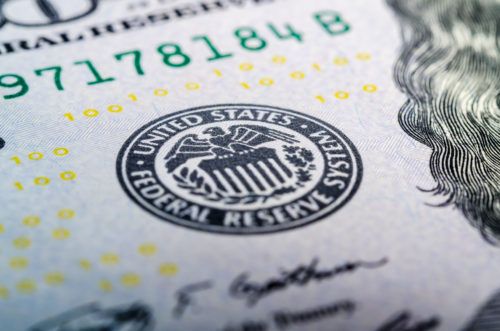TradingTips.com |
- Unusual Options Activity: Amarin Corporation (AMRN)
- Insider Activity: Flexsteel Industries (FLXS)
- Federal Reserve Quietly Buying Treasuries
- Consumer Confidence Shows Biggest Drop in Six Years
| Unusual Options Activity: Amarin Corporation (AMRN) Posted: 03 Sep 2019 03:00 AM PDT
Bet in 50 percent drop in shares by October. On Friday before the long weekend, over 14,400 contracts traded on the October $10 put options on Amarin Corporation (AMRN). With a prior open interest of just 123 contracts, the trade saw a surge in volume over 116-fold! With a current share price around $15 per share, the $10 strike price is a bet on shares dropping by at least as much as one-third in the next 45 days. Amarin is a pharmaceutical company that engages in the development of therapeutics for the treatment of cardiovascular diseases. Action to take: The bet against shares in such a short amount of time is a continuation of the company's recent decline. From its recent peak near $24, shares have shed nearly $10 per share, so another $5 per share looks reasonable here. With the company's 52-week low below $3, there could be far more upside than downside in this option. The October puts trade for about $0.11, or $11 per contract. Speculators may want to take a look at those put options for some seasonal weakness in the market—or even go out to the January 2020 strike date for more time for the trade to play out. Investors may want to consider going long shares under $10, but at current prices and with a downward trend in shares, buying now looks like an unattractive bet relative to the risks involved. |
| Insider Activity: Flexsteel Industries (FLXS) Posted: 03 Sep 2019 03:00 AM PDT
CEO, CIO, CFO, and head of manufacturing, pick up shares. On Thursday, August 29th, Michael McClaflin, CIO at Flexsteel Industries (FLXS)picked up 2,350 shares. The total price came to just under $32,000, and represents his first purchase of shares at the company. He was joined by Carl Hayden, vice president of manufacturing, who bought 2,000 shares, also starting a stake at the company and paying $27,000 to do so. CFO Marcus Hamilton also joined in, buying 2,300 shares and increasing his stake by 26 percent. Last but not least, CEO Jerald Dittmer bought 5,000 shares, at a cost just under $67,000. Insiders have only been buyers of shares year to date, and the last insider sales occurred in 2017 at prices 70 percent higher than where shares currently trade. Flexsteel Industries manufactures, imports and markets residential and contract furniture products in the United States, including sofas, chairs, beds, tables, desks and chairs. Action to take: With shares down 60 percent in the past year, and with a cluster of large insider buys, there could be some attractive upside in shares here, either from the company turning around on sales or profitability, or going private. With no debt on the balance sheet, nearly $3 per share in cash, and a share price of $15, the company looks attractive as a potential buyout candidate. Investors should consider shares under $15, where they can get a 6 percent dividend yield to wait. The company is too small for options trades. |
| Federal Reserve Quietly Buying Treasuries Posted: 03 Sep 2019 03:00 AM PDT
Fed buys typically boost assets like stocks and real estate. During the years the Federal Reserve was engaging in quantitative easing (QE), the bank would routinely purchase assets such as U.S. Treasuries. This buying stopped in October 2014, with the end of the QE program. However, over the past few weeks, the central bank appears to have started buying up Treasuries again, with about $14 billion bought so far. That's based on changes in the Federal Reserve's balance sheet in recent weeks. If true, it suggests a few possibilities. First, the Fed mentioned during their rate cut decision in July that they would also stop unwinding their balance sheet, and the Treasury buys could simply be a purchase made from the proceeds of maturing assets. Second, it could be a stealthy way of easing without reducing interest rates further. A surprise or rapid interest rate cut could shock the market into thinking that the economy is worse than it is. Action to take: Typically, when the Fed has been a buyer of assets like Treasuries, other assets like stocks and real estate have headed clearly up. When the Fed has been a seller, other assets have struggled or even declined. If the Fed is quietly buying again, we may see a further rally in the market from here, albeit for reasons not related to economic or corporate fundamentals. |
| Consumer Confidence Shows Biggest Drop in Six Years Posted: 03 Sep 2019 03:00 AM PDT
Data contraction after expectation for rally. August data from the University of Michigan showed a drop in consumer confidence to 89.6. This is the lowest level since October 2016, and the expectations index for consumer confidence slid to lows last seen in January. The overall data shows the biggest drop in six years, and is also at the lowest level of the Trump Presidency, a precarious position for the incumbent going into the final year before the 2020 election. The index previously reporting 92.1 and 98.4 in recent months. The index is measured with 100 as neutral, and any number below 100 as a decline. The three-month trend thus suggests not only a decline, but an increasing one. Some traders had been betting on a rebound in consumer confidence, citing the delay of tariffs with China and the stock market's performance over the past month. However, data collected from the consumer confidence survey suggests that consumers are concerned with a possible "tariff cliff" in the months ahead, and that uncertainty over the size and implementation of tariffs with China will cause consumer spending to continue to decline. As with other pieces of economic data lately, the news suggests that the economy is slowing down, and that a resolution to the trade war with China may allow for a recovery in many key growth metrics as the uncertainty disappears. |
| You are subscribed to email updates from TradingTips.com. To stop receiving these emails, you may unsubscribe now. | Email delivery powered by Google |
| Google, 1600 Amphitheatre Parkway, Mountain View, CA 94043, United States | |





No comments:
Post a Comment